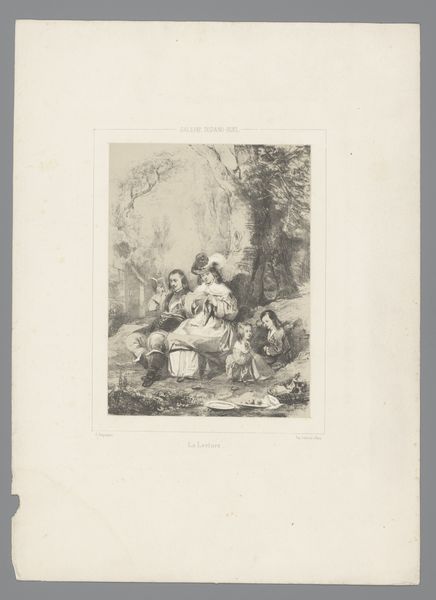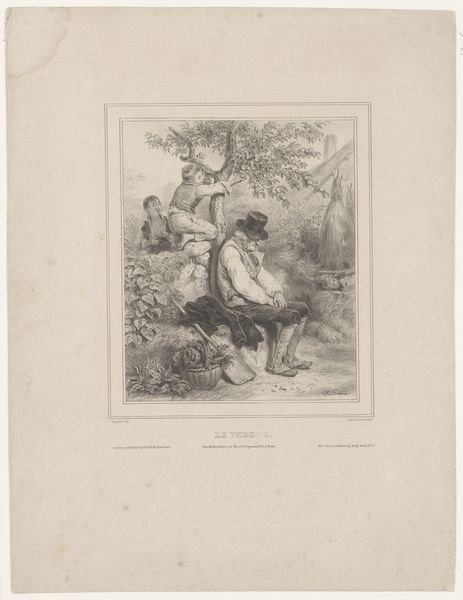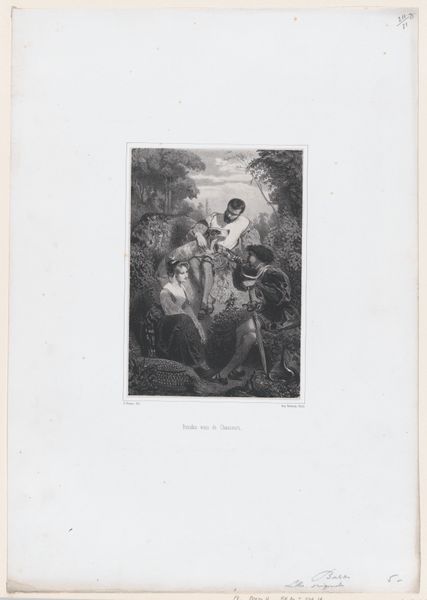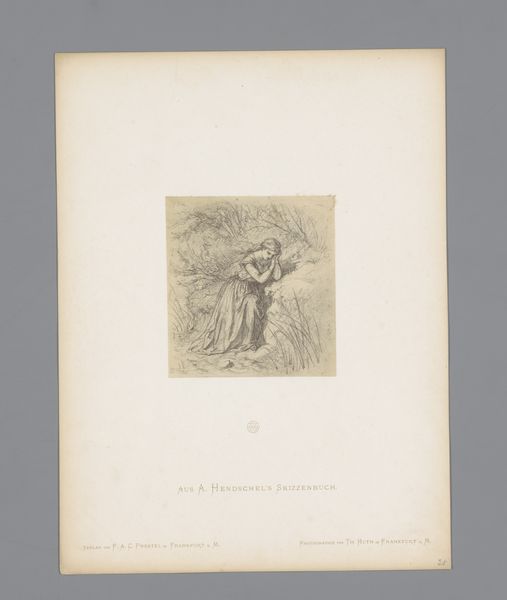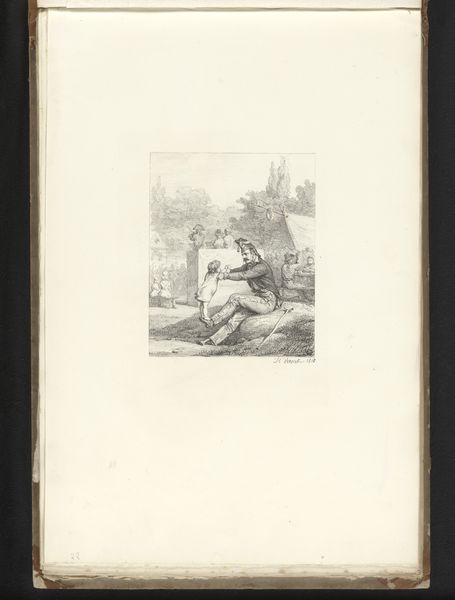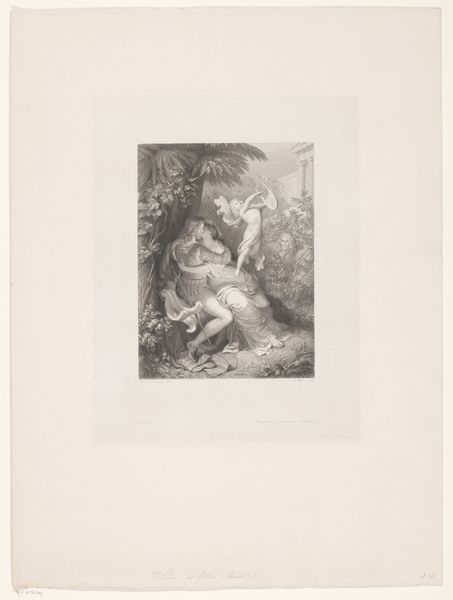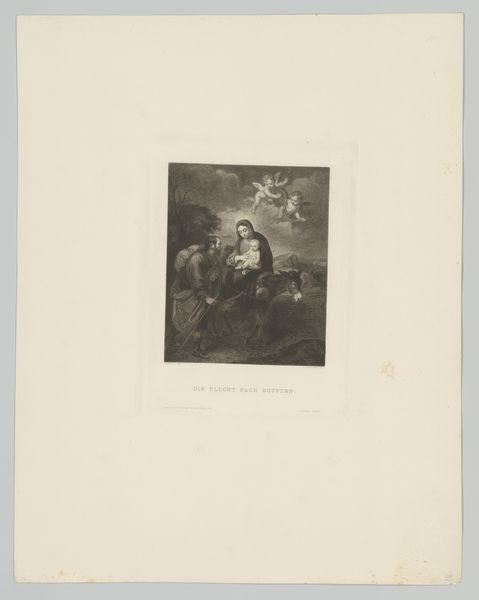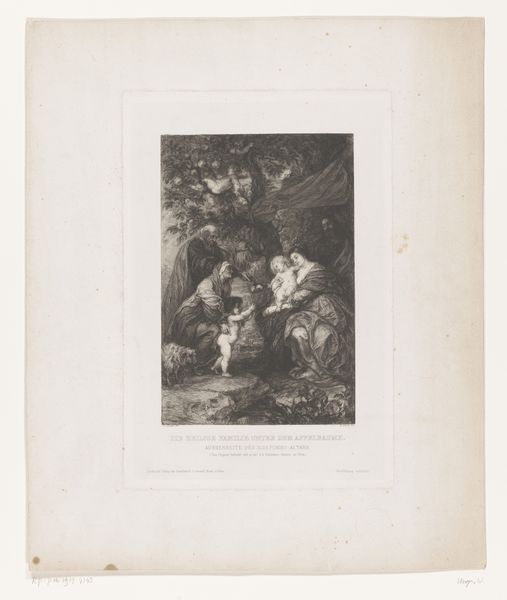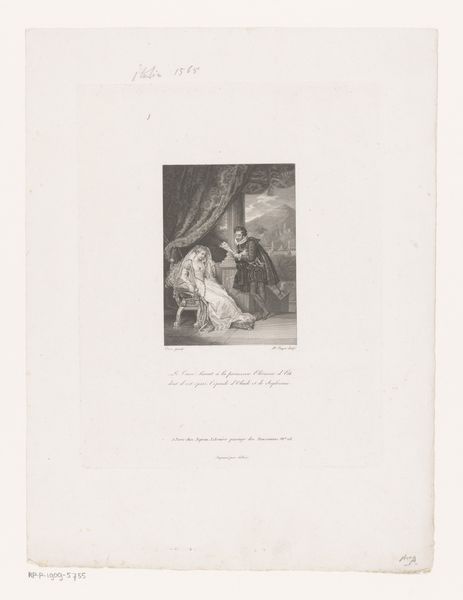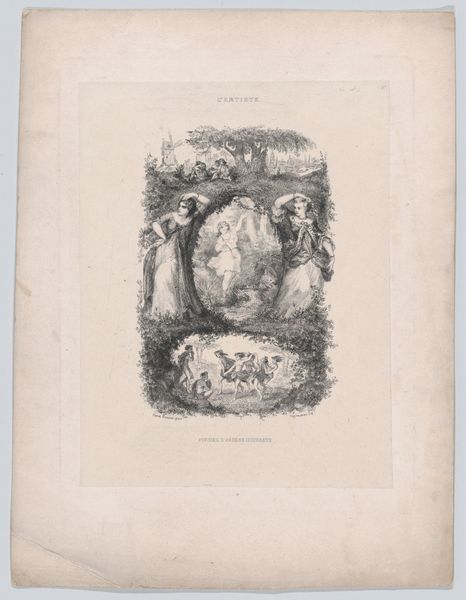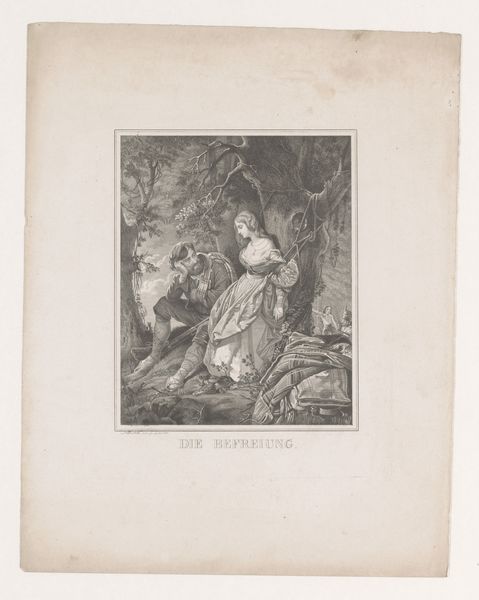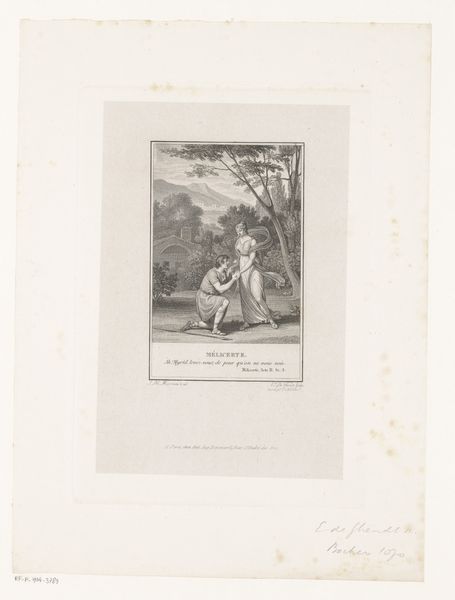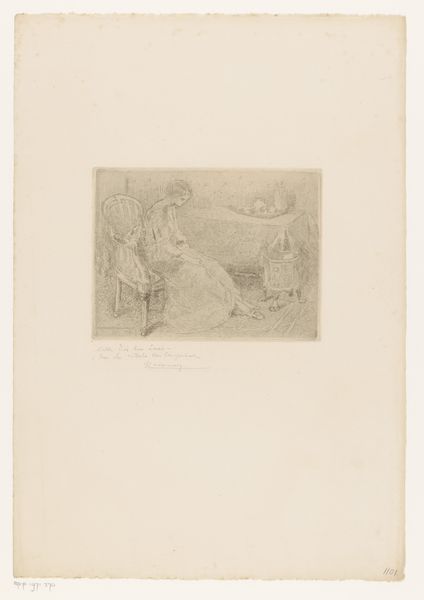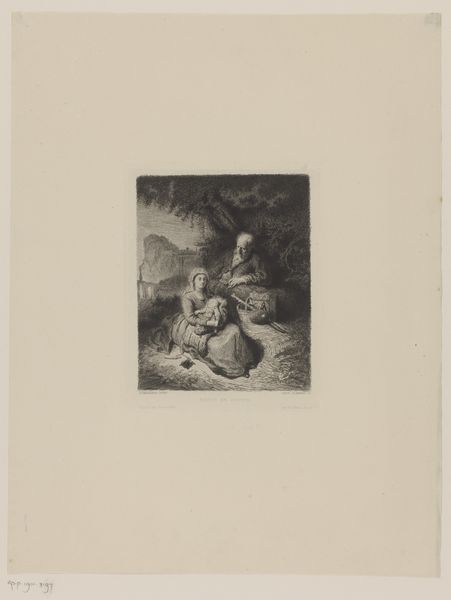
print, engraving
#
narrative-art
# print
#
figuration
#
romanticism
#
line
#
genre-painting
#
engraving
Dimensions: height 567 mm, width 398 mm
Copyright: Rijks Museum: Open Domain
Curator: Let's discuss this engraving from Jules David, titled "Estelle en Némorin," created sometime between 1841 and 1843. Editor: My immediate reaction is that there's a gentleness in the scene. It has a somewhat idyllic feel. The soft lines and shading give it a peaceful, romantic air. What do you see in terms of its historical context? Curator: This print exemplifies Romanticism’s embrace of sentimentality and the everyday life of rural people. These pastoral scenes gained popularity amongst an urban audience eager for an idealized view of simpler times, an escape from the industrializing cities. Notice how even in print form, this artwork fulfills a certain demand within the art market, revealing much about society at that moment in history. Editor: The composition uses conventional visual cues for love and virtue, I think. The seated woman, for example, holds the bowl offered to her from a kneeling man. We see she hesitates, perhaps considering this offer while another character nearby appears almost hidden, perhaps sleeping or just out of view? Those sheep in the distance likely hold layers of meaning regarding sacrifice, offering and value...it really is quite striking. Curator: Absolutely. Consider the ways gender roles were being re-examined and reinforced. We often find women, particularly in domestic settings or, as here, related to notions of pastoral serenity, presented as moral guardians of society, reinforcing and negotiating social and political ideas through everyday scenes. The man offering is participating in an act that recognizes female superiority, conforming with common customs, but perhaps questioning that dynamic? Editor: Indeed. Also, the prominent positioning of the hat, at her feet; perhaps an offering alongside what is in the bowl? And consider the choice of title, "Estelle en Némorin"…the choice to draw focus to individuals by name tells us of the romantic importance of human narrative and experience that stands firm, as you stated earlier, against the throes of urbanization and perhaps lost ways of life. The romanticism holds much historical context about a population that yearns for nostalgia, but the underlying iconography solidifies values and virtues held dear. Curator: Exactly, that delicate interplay tells us so much about the dynamics of image making and what those images represented for its public. Editor: Ultimately it becomes an interesting reflection on values during this era, doesn't it? Curator: It truly does, and illustrates how an ostensibly simple image contains layered complexity and nuance.
Comments
No comments
Be the first to comment and join the conversation on the ultimate creative platform.
